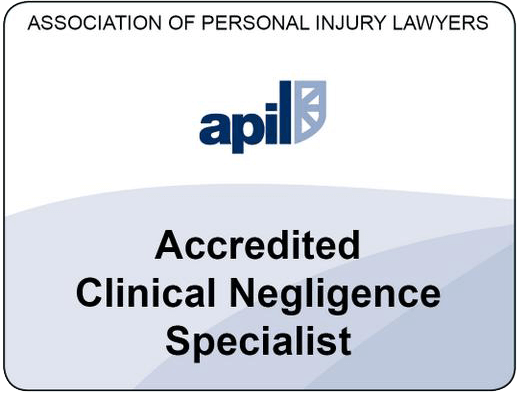When it comes to employment law, it’s inevitable that at some point a business is likely to have a grievance with a member of staff. In order to deal with this, all organisations should have a formal grievance procedure.
As part of our brand new app, HR in Hand, we’ve set out a model grievance procedure that you can find in the Employment Policies and Procedures section.
As an extension of this, we’ve put together some guidance notes on how an organisation should address employee grievances.
What is a grievance?
Put simply, a grievance is a complaint or concern from an employee in relation to their employment. Grievances can encompass a wide range of subjects from working conditions to complaints about the behaviour of other employees, including serious issues relating to harassment and/or bullying.
Responding to grievances
Most grievance procedures provide scope for informal resolution of grievances. However, sometimes employees’ grievances cannot be dealt with informally, and employees should have a formal avenue to pursue their complaint or concern.
Grievance procedures should encourage employees to set out their grievances fully in writing. Once a grievance letter is received, the organisation should hold a meeting and, thereafter, investigate the complaint.
The initial meeting with the employee should enable the employee to properly explain their grievance. The employer can, of course, ask appropriate questions to clarify the complaint, identify potential witnesses and understand the resolution that the employee is seeking.
Sometimes is will not be possible to resolve grievances at the initial meeting, in which case it will be appropriate to adjourn the meeting and resume after an investigation has taken place.
The investigation
Any investigation should be concluded as speedily as possible. Sometimes other employees may need to be interviewed. It is important that when interviewing witnesses that they are informed that the subject matter of the grievance should be kept confidential.
In some cases, grievances will relate to the behaviour of managers or other employees. In cases involving more serious allegations, consideration will need to be given as to whether or not that other employee needs to be suspended or moved away from the complainant to facilitate an effective investigation. Generally, moving a complainant is not viewed as best practice, as the complainant may argue they have been penalised for raising a complaint.
Seek specialist advice
Prudently, businesses should take specific legal advice on how to deal with such serious complaints. Where a complaint relates to the behaviour of a manager, or another employee, they will need to be informed that the complainant should not be subjected to any detriment or unfavourable treatment, including being “sent to Coventry” or being ignored.
At all stages through the grievance process, the employee bringing the grievance has a legal right to bring a companion (either a fellow worker or a trade union representative) to a grievance meeting. Where complaints relate to another employee, then it is probably best practice rather than a legal requirement to permit the person being complained about to be allowed to be accompanied at any investigation meeting.
Once the investigation is complete, a business should communicate the outcome of the grievance as quickly as possible in writing, including details of any action it will take to resolve the complaint.
Right of Appeal
If an employee’s grievance is either not upheld or partially upheld, an organisation should confirm, in its decision letter, that the employee has the right of appeal. The employee should be informed as to how that right of appeal should be exercised, to whom the appeal should be addressed and the timescale. They should also be informed that the basis of appeal should be set out in writing.
Ideally, the appeal should be dealt with by a person not previously involved in the process. This may not always be possible in smaller businesses or owner-managed businesses but is desirable and certainly should be applied in larger businesses and organisations. Again, the employee has the right to be accompanied at any grievance appeal hearing.
Grievances and Disciplinary Procedures
It is not uncommon for employees to submit grievances when faced with disciplinary or performance action. A decision will need to be taken whether to suspend the disciplinary procedure to fully investigate the grievance, thereby delaying the disciplinary action, or, if the issues are related, to deal with them concurrently. It is recommended that specific legal advice is sought in these circumstances.
Acas Code
Acas has issued a statutory code of practice, entitled “Acas Code of Practice on Disciplinary and Grievances Procedures”. It is important that the Acas Code of Practice guidelines are followed (these are summarised in the guidance above) as a failure to follow these guidelines can lead an Employment Tribunal to increase or reduce awards by up to 25% in certain cases if the employer or employee unreasonably fails to comply with the Acas Code.
Prudently, employers should ensure that there is a proper mechanism for effective address of grievances, as an employer’s failure to properly address an employee’s grievance or complaint can provide in itself a basis for an employee to claim constructive dismissal.
Practical Steps for Employers
Finally, these are the points that we believe all employers should take into consideration:
- Make sure you have a clearly communicated grievance procedure;
- Ensure managers understand how to handle grievances effectively and provide training if required;
- Provide scope for both informal and formal resolution of grievances;
- Following receipt of a grievance, hold a meeting with the aggrieved employee to enable them to put their side of the story before investigating;
- After investigation, hold another meeting with the employee to discussion the provisional findings before making a decision;
- Keep written records, including detailed minutes of meetings;
- Ensure that the process is concluded as speedily as practically possible, updating the employee if matters become more delayed;
- Ensure reasons are provided for any decision in relation to a grievance outcome.






